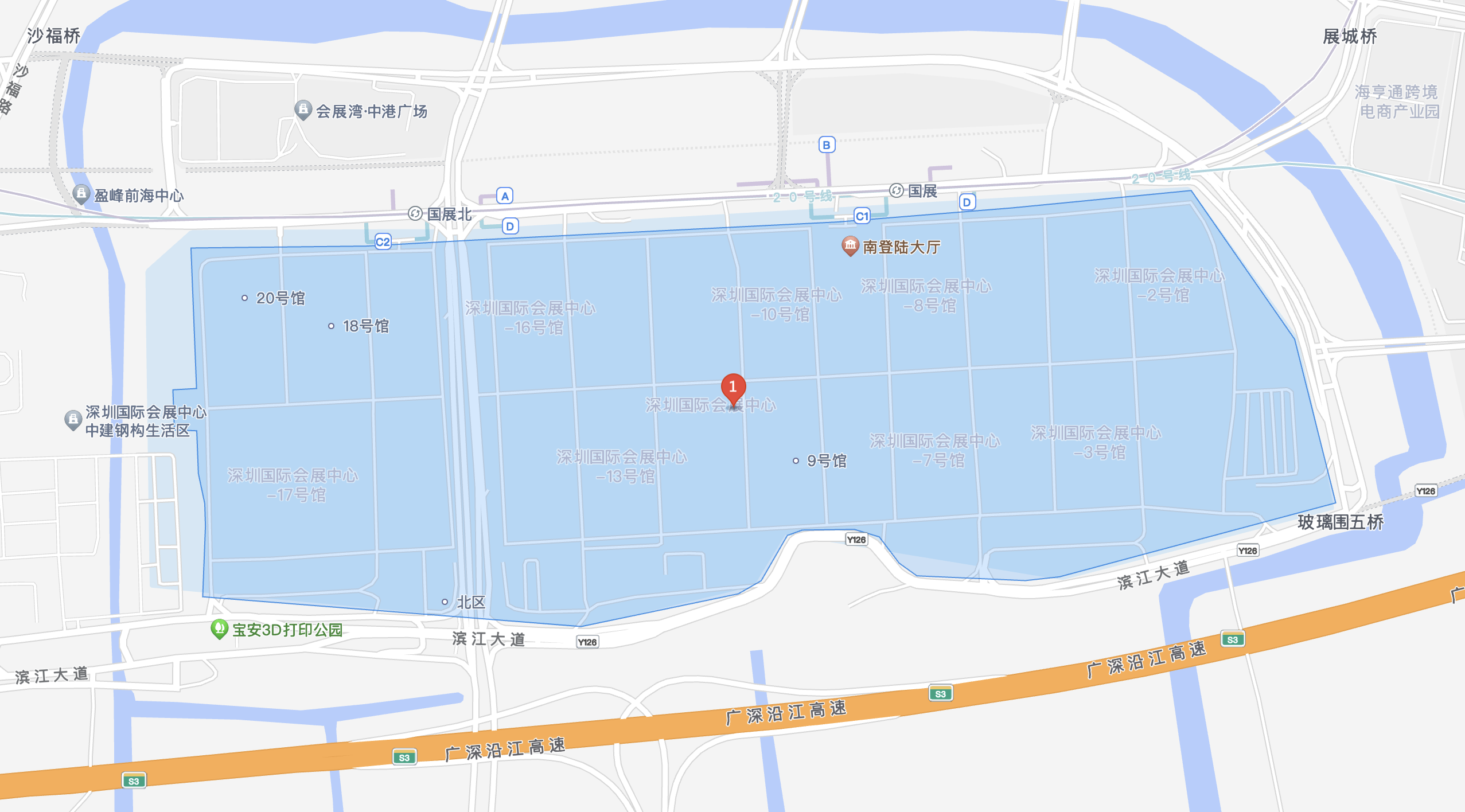The Wi-Fi Alliance Serial Forum, held from August 27 to 28, 2025, successfully concluded in Hall 10 of the Shenzhen World Convention and Exhibition Center (Bao'an). Bringing together numerous industry leaders, technical experts, and business representatives, the forum focused on four core topics: national and regional regulations and product certification, Matter over Wi-Fi, Wi-Fi and IoT, and the current state and future of Wi-Fi HaLow. The forum delved into cutting-edge developments, ecosystem development, and commercialization paths in these fields. Through in-depth sharing and effective exchanges, attendees experienced a feast of ideas that deeply integrated technology and industry, witnessing the emergence of new opportunities for Wi-Fi and the gradual unfolding of its future blueprint.
Wi-Fi Alliance Sequencing Forum
National and regional regulations and product certification
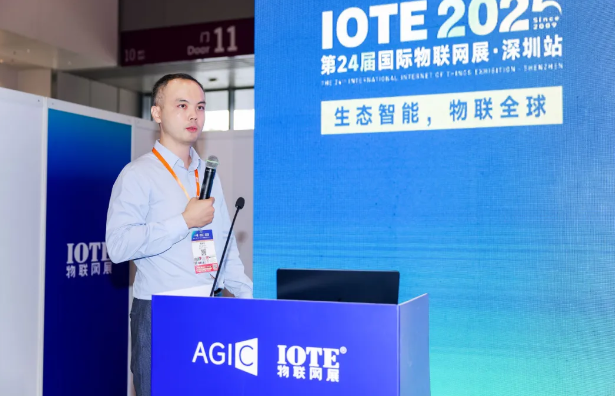
Chang Tianyu, Director of the International Certification Division of the National Radio Monitoring Center Testing Center, systematically interpreted the latest developments in global certification. He first emphasized that SRTC has established an international certification system covering more than 30 fields such as radio frequency, electromagnetic compatibility, and network security. Its test reports are recognized by more than 180 countries, and its laboratory is equipped with 48 radio frequency shielding rooms and advanced platforms such as self-developed 5G/Wi-Fi test systems.
Regarding the EU market, Chang Tianyu analyzed in detail the new cybersecurity regulations enforced by the RED Directive, and compared the impact of the upcoming Cyber Resilience Act (CRA) and the Artificial Intelligence Act, pointing out that these regulations will place higher requirements on the security of wireless devices. In addition, Chang Tianyu focused on the dual CE/FCC requirements faced by Wi-Fi IoT devices, especially mentioning the technical challenges such as 320MHz bandwidth and channel penetration brought by Wi-Fi 7 technology, and briefly explained the modular compliance path for drone CE certification.
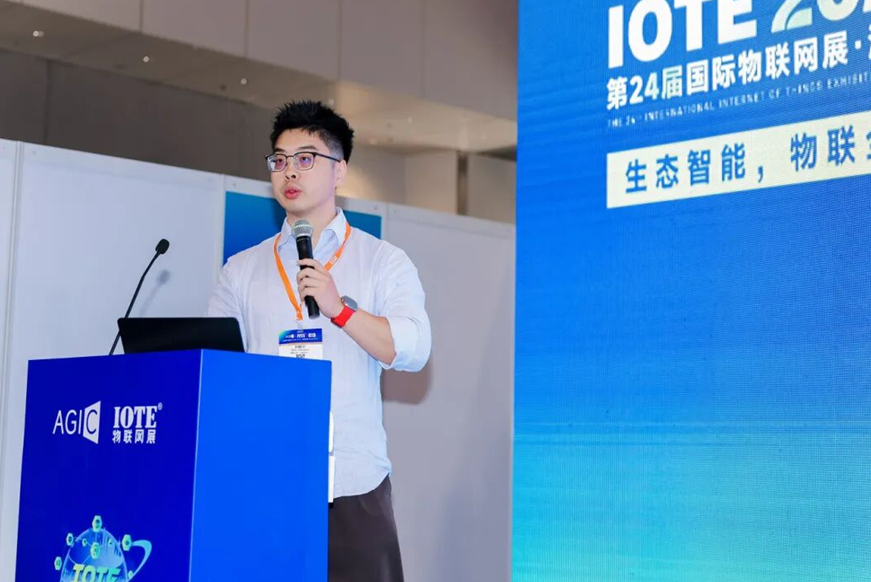
Liu Zhenyu, Ecological Development Manager of the International Certification Division of the National Radio Monitoring Center Testing Center, systematically explained the development trend of the Global Short Range Wireless Alliance. He pointed out that alliance certifications such as Wi-Fi, Bluetooth, and Matter have become the "passport" for the global deployment of IoT products, ensuring not only cross-brand interoperability but also international mutual recognition. Currently, alliances are deepening cooperation but also engaging in technological competition: the WFA and CSA are promoting the integration of Matter over Wi-Fi, while FiRa and CCC are jointly developing digital key standards. Meanwhile, Wi-Fi 7 and 5G RedCap are establishing differentiated positions in the industrial IoT, while UWB and Bluetooth are developing precise positioning.
Liu Zhenyu analyzed that Wi-Fi HaLow, with its over-1km coverage and low power consumption, is filling the technological gap between Bluetooth and LoRa, and is widely used in scenarios such as smart door locks and agricultural monitoring. Meanwhile, high-speed, low-latency technologies such as 5G RedCap and Wi-Fi 8 are driving innovative applications in AR/VR and the Internet of Vehicles. He emphasized that standards organizations such as 3GPP and IEEE are accelerating the breakdown of ecosystem barriers. Regulations such as the EU CRA are promoting global compliance unification. Alliances such as CSA Matter, Bluetooth SIG, and FiRa have already achieved ecosystem implementation in three key scenarios: smart home, industrial internet, and connected vehicle. This marks the initial formation of a new IoT landscape characterized by "mutual recognition of standards and integration of scenarios."
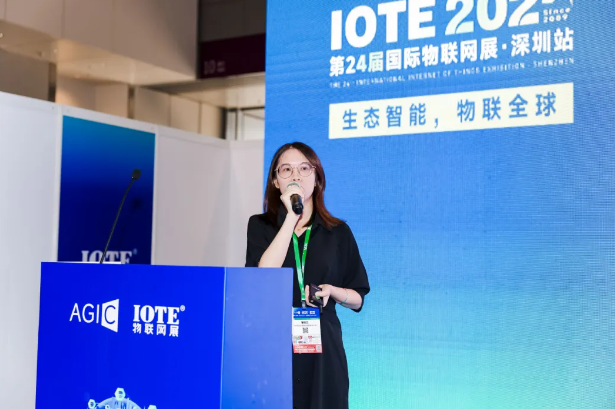
SGS Electronics and Electrical Global Access Project Manager Li Danlan detailed the key requirements and latest developments for IoT product access in global markets. She first outlined the international certification services offered by SGS, emphasizing how one-stop services can help companies navigate the complex challenges of international market access. She then conducted an in-depth analysis of wireless product certification requirements in major markets such as Asia, Latin America, the Middle East, and Africa, specifically highlighting the specific regulations in Indonesia, Malaysia, Singapore, South Korea, and Vietnam.
Li Danlan also introduced the regulatory bodies and their specific requirements in various countries, such as the certification processes of Singapore's IMDA and South Korea's KC, and detailed the certificate validity period and application steps. She also shared the latest international wireless certification news, particularly the impact of cybersecurity regulations on IoT devices.
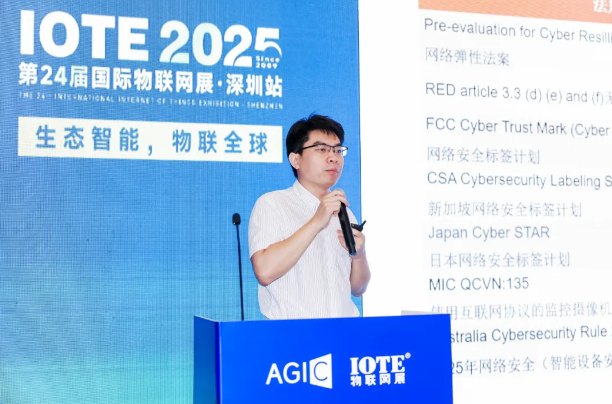
SGS Senior Cybersecurity Development Manager Yuan Yaqi focused on global cybersecurity compliance requirements for IoT devices, specifically interpreting the cybersecurity provisions of the EU Radio Equipment Directive (RED), effective August 1, 2025, covering device security, privacy protection, and financial fraud prevention. He also detailed the testing requirements and certification process for the EN 18031 series of harmonized standards.
He also introduced the Cyber Resilience Act (CRA), which will be implemented in 2027, emphasizing its profound impact on the security management of digital products throughout their lifecycle, including vulnerability reporting obligations and a categorized regulatory mechanism. Drawing on real-world cases, Yuan Yaqi explained how companies can address compliance challenges under various regulations and shared SGS's practical experience in standards application and testing and certification, providing a clear path and professional support for the secure and compliant entry of IoT products into the global market.
Wi-Fi Alliance Series Forum
Matter over Wi-Fi
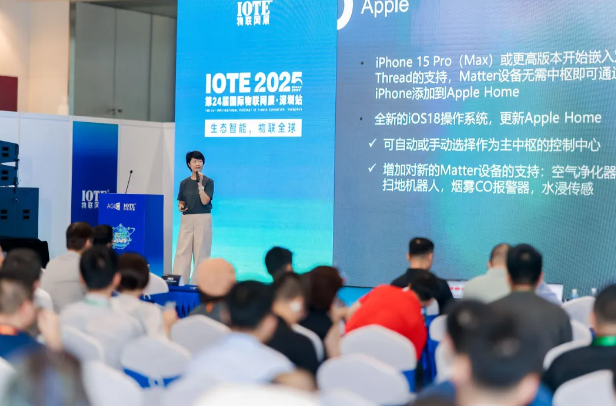
Dr. Weimin Su, Chair of the Connectivity Standards Alliance (CSA) China Member Group, revealed in his speech that the global smart home market is growing at an annual rate of 60% toward $1.6 trillion, but users generally face challenges such as complex installation, device interoperability, frequent failures, and privacy and security concerns. The Matter standard emerged as a response to this challenge. By unifying technical specifications, it effectively reduces development costs, breaks down platform barriers, enables cross-ecosystem device connectivity, and significantly improves product usability and interoperability.
Dr. Su reviewed the evolution of the Matter standard from supporting basic devices like lighting and door locks to expanding to complex scenarios like home routers and heat pump systems. She also highlighted its rapid adoption in global and Chinese markets, including integration with mainstream platforms and the launch of a large number of certified products. She particularly emphasized the advantages of Matter over Wi-Fi in bandwidth, coverage, and compatibility, which will help accelerate its adoption. Looking ahead, Matter will continue to optimize configuration processes, enhance security mechanisms, and improve network infrastructure support. Through technological innovation and cross-brand collaboration, it aims to build a smarter, more convenient, and more secure whole-home smart ecosystem.
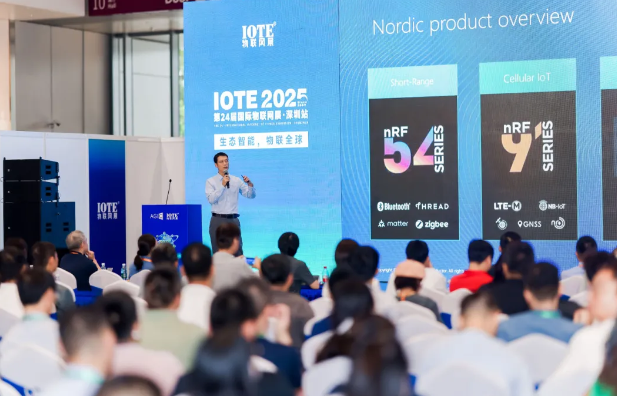
Ai Minhua, Director of Standards and Ecosystems for Nordic Semiconductor China, detailed how Nordic's Matter over Wi-Fi technology is reshaping the future of the smart home with its ultra-low power consumption. He noted that while Wi-Fi offers the advantages of high bandwidth and wide coverage, traditional solutions consume high power, making them difficult to meet the demands of battery-powered devices. Nordic's nRF71 Series SoCs, combined with proprietary low-power technologies such as Target Wake Time (TWT) and optimized power management modes, significantly reduce sleep and receive current, significantly improving the battery life of Wi-Fi devices.
Ai Minhua emphasized that Nordic's solution supports multi-band Wi-Fi and multi-protocol coexistence, offers excellent connection stability and security, and provides comprehensive development support through the nRF Connect SDK, helping developers quickly implement Matter products. He also shared use cases such as smart door locks and thermostats, demonstrating the advantages of the Matter standard in simplifying network configuration and enabling cross-platform connectivity. Nordic is using technological innovation to break the power consumption bottleneck of Wi-Fi IoT and accelerate the development of a low-power, highly compatible, and easy-to-use smart home ecosystem.
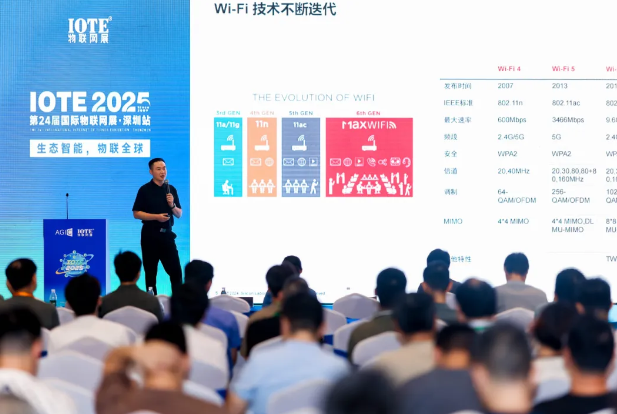
In his speech, Liu Jun, Senior Ecosystem Manager for Asia Pacific at Silicon Labs, elaborated on how Matter over Wi-Fi can deliver a more efficient and reliable connectivity experience for the smart home. He noted that as Wi-Fi technology evolves from Wi-Fi 4 to Wi-Fi 7, its high bandwidth, wide coverage, and mature network infrastructure provide an ideal connectivity foundation for IoT devices. The introduction of the Matter standard effectively addresses the fragmentation of the smart home ecosystem and enables seamless interoperability across platforms and brands.
He highlighted Silicon Labs' SiWx917 series of Wi-Fi/BLE combo chips, which feature an ultra-low-power design and support local AI/ML inference and sensor data pre-processing, significantly reducing power consumption and improving response speed. He also demonstrated an IoT gateway architecture based on Wi-Fi and Thread dual protocols, helping to build more stable and high-capacity home networks. He stated that Silicon Labs is promoting the widespread adoption of Matter over Wi-Fi in lighting, sensors, smart appliances, and other scenarios through integrated hardware and software solutions, accelerating the realization of the vision of a truly connected, smart life.
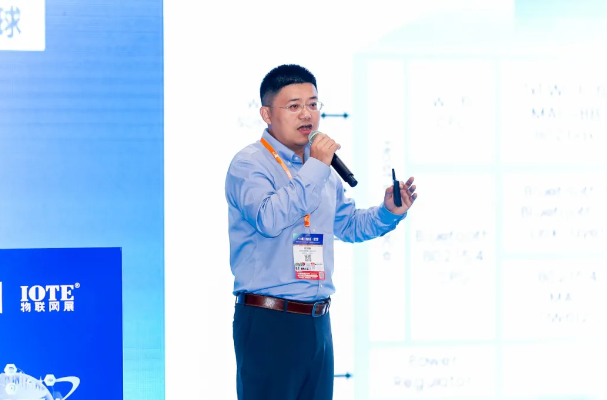
Xing Guofeng, Senior Application Manager for NXP Greater China, introduced the industry's first tri-band wireless SoC, the IW612, and the tri-band wireless microcontroller, the RW612. These two products integrate Wi-Fi 6, Bluetooth 5.2+/BLE 5.3, and 802.15.4 (Thread) radio frequency technologies. They are designed for smart home edge routers, gateways, and Matter protocol devices. They utilize patented Multi-Radio Coexistence (MRC) arbitration technology to effectively mitigate interference issues associated with simultaneous Wi-Fi, Bluetooth, and Thread operations in the 2.4 GHz band.
Its innovation lies in real-time coordination of three internal radios and expanded support for external UWB/LTE. Combined with WCI-2/PTA/UART+GPIO interfaces, it achieves millisecond-level dynamic arbitration. Tests have shown that it can guarantee 25Mbps Wi-Fi throughput, zero audio lag, and zero Thread packet loss in smart display hub scenarios. Furthermore, the product features the EdgeLock™ security subsystem, providing a hardware-level root of trust and end-to-end encryption, significantly reducing security risks after device deployment. Leveraging the deep integration of its processor and three radios, NXP offers cost-effective solutions for applications such as smart plugs, thermostats, and Matter controllers, helping to build a seamlessly connected smart home ecosystem.
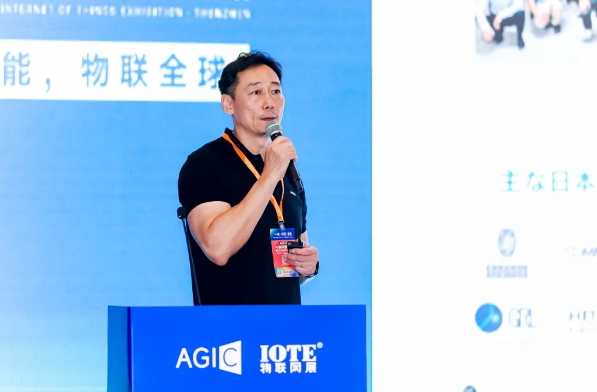
Hideaki Nakayama, representative of the Connectivity Standards Alliance (CSA) Japan Member Group and general manager of Allion Japan, delivered a speech titled "The Current State and Future of Matter and Wi-Fi in the Japanese Market." He noted that Japan's smart home penetration rate still lags behind that of Europe, the United States, and China, that manufacturers' participation in the CSA is insufficient, and that consumer awareness and usage of smart home appliances need to improve. With the advancement of the Matter standard, device compatibility will be significantly improved. Users will no longer be constrained by vendor or ecosystem barriers and can freely choose products based on their preferences. This will greatly promote the adoption of smart homes in Japan.
According to IDC, Japan's IoT market will reach 9.1 trillion yen by 2026, with an average annual growth rate of approximately 9.1%. Smart home consumption will be a key driver. As a third-party certification and quality assurance organization, Allion will continue to provide efficient support to the industry chain through one-stop services, accelerating the implementation and prosperity of the smart home and IoT ecosystems.
Wi-Fi Alliance Serial Forum
Wi-Fi and IoT
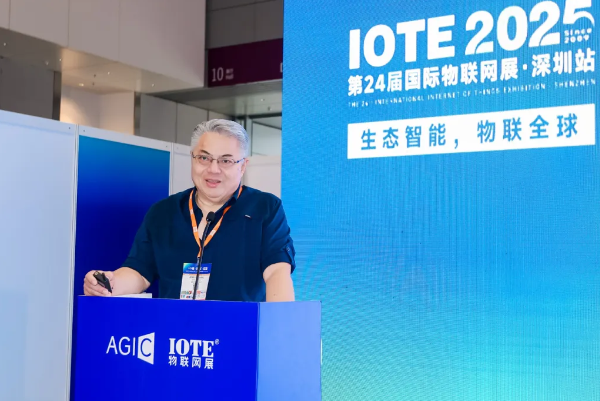
Huang Jiarui, General Manager of Business Affairs for the Wi-Fi Alliance in Asia Pacific, systematically explained the evolution of Wi-Fi technology and its ecosystem development. He noted that Wi-Fi 7, with its 320MHz channel and Multi-Link Operation (MLO) technology, is rapidly gaining popularity. Global device shipments are expected to exceed 5.2 billion in 2025, 35% of which will support the Wi-Fi 7 standard. The fifth anniversary of the opening of the US 6GHz spectrum has become a key driver. The addition of a new 1200MHz band has doubled the available spectrum and is expected to generate over $1.2 trillion in economic value by 2027.
In terms of technological integration, he also outlined three major future innovation directions: Wi-Fi awareness for precise positioning, AI-optimized network management, and environmental power generation to overcome energy constraints. The speech specifically highlighted that Wi-Fi HaLow, with its low power consumption and wide coverage, is rapidly replacing traditional solutions in scenarios such as smart agriculture and industrial monitoring. The Wi-Fi Alliance, through a certification system built by over 900 members, continues to promote cross-protocol interoperability and smart ecosystem upgrades.
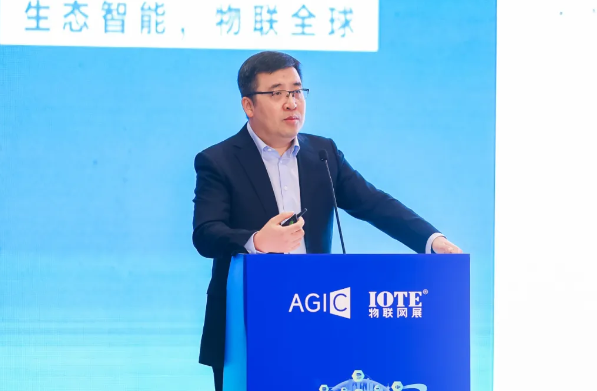
MediaTek Product Director Xingbo Zhao detailed the innovations and application prospects of MediaTek's Filogic series Wi-Fi 7 technology, achieving three core technological breakthroughs: a single-MAC multi-link architecture eliminates inter-chip latency, achieving a measured UDP rate of 14.5Gbps (20% ahead of competitors) and a 70% reduction in TCP latency; digital pre-distortion (DPD) technology overcomes 6GHz high-frequency distortion, increasing coverage radius by 2-3dB; and the 4T5R antenna enhances wall penetration by 20%, eliminating blind spots in smart homes.
In terms of ecosystem implementation, MediaTek has established a comprehensive timeline: smartphones and OTT devices will be commercially available first in 2023, followed by expansion to laptops, service provider gateways, and industrial scenarios in 2024. The tri-band 4x4 gateway solution will enable gigabit home hubs. Zhao Xingbo stated that the CES 2023 Innovation Award demonstrates the company's technological foresight. MediaTek will further expand its application in scenarios such as the Internet of Vehicles and the Industrial Internet, using an open ecosystem to drive the evolution of connectivity paradigms.
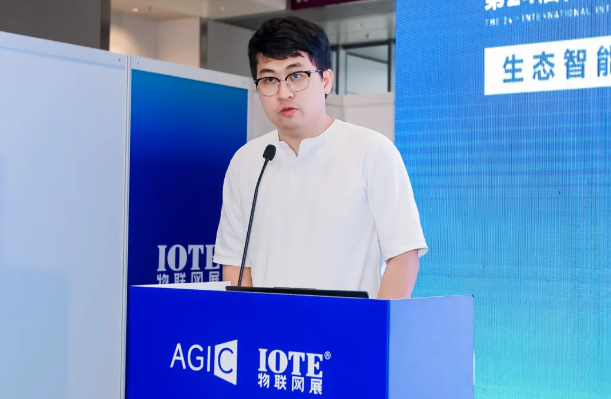
Tuya Smart TuyaOpen Developer Development Manager Lai Xuanhan shared the latest developments in AIoT technology. He pointed out that although the number of AIoT devices worldwide is expected to exceed 7.5 billion this year, connection stability and compatibility remain common challenges. To this end, Tuya Smart has launched a full-link solution covering open platforms, self-developed Wi-Fi chips and modules. Lai Xuanhan focused on the newly released T3 and T5 series modules. The T3 features ultra-low power consumption, significantly extending device battery life, while the T5 enhances audio and video processing capabilities and supports richer intelligent interactions.
Through the TuyaOpen platform, developers can quickly connect devices to the Internet and integrate multimodal AI functions such as voice and vision, seamlessly connecting to large models. Lai Xuanhan emphasized that Tuya has deployed 7 major data centers and 600+ CDN nodes around the world, providing global cloud services and security and compliance support to help products go global efficiently.
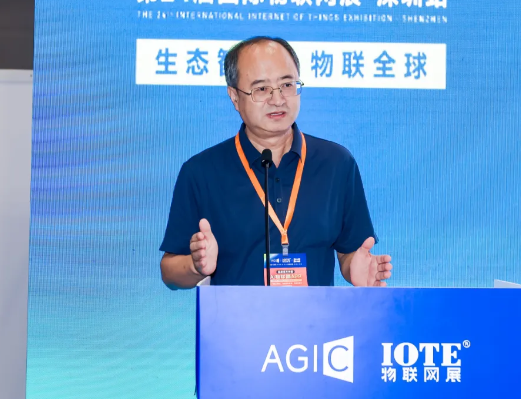
Huaxin Aotian Product and Solution Development Director Fan Xiaowei shared the company's innovative practices in Wi-Fi AP-enabled IoT data backhaul. He pointed out that, with multiple IoT access technologies like Bluetooth, Zigbee, and LoRa, Wi-Fi APs, with their advantages of unlicensed frequency bands, widespread deployment, and high user acceptance, are the most ideal local data backhaul solution. Enterprise-grade Wi-Fi APs offer strong scalability and convergence capabilities. They not only support wired interfaces like Gigabit optical networks and RS485, but can also integrate wireless technologies like BLE, Zigbee, and UWB, meeting the needs of diverse scenarios such as industrial and security.
Huaxin Aotian ensures stable product operation in complex environments through standardized industrial design, global quality certifications, and high-reliability manufacturing. The company also launched hardware solutions that support PSE power supply, multi-mode chip integration, and quantum encryption. Based on a cloud-native architecture, the company upgraded its software system to support the MQTT protocol and Matter over Wi-Fi, enhancing the efficiency and security of IoT device management.
Wi-Fi Alliance Serial Forum
Wi-Fi HaLow Current Status, Development, and Outlook
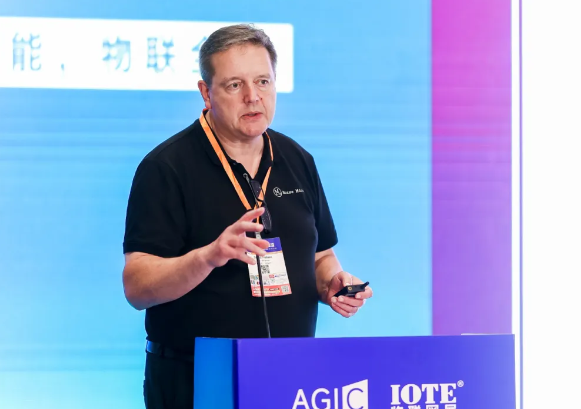
Dave Halasz, First Vice Chair of IEEE 802, Vice Chair of Wi-Fi HaLow, and Vice President of Standards at Morse Micro, gave a detailed introduction to Wi-Fi HaLow (802.11ah) technology and its advantages for IoT applications. He noted that Wi-Fi HaLow, based on the 900MHz sub-GHz frequency band, offers long-range coverage, low power consumption, and strong penetration. A single access point can cover several square kilometers, making it suitable for large-scale deployments such as smart agriculture, industrial sensing, and smart cities. Compared to traditional 2.4GHz Wi-Fi and LoRa technologies, Wi-Fi HaLow offers higher data rates while maintaining low power consumption, supporting stable connections for hundreds of devices.
Halasz noted that the technology natively supports WPA3 security encryption, Wi-Fi Easy Connect fast network provisioning, and OTA firmware updates, ensuring device security and ease of use. He shared the results of field tests conducted with the Wireless Broadband Alliance (WBA) in the United States and Japan, validating the reliable performance of Wi-Fi HaLow in homes, warehouses, and urban environments. Morse Micro is currently collaborating with global module manufacturers, original design manufacturers (ODMs), and operators to promote ecosystem implementation, covering multiple industries, including security, agriculture, and energy.
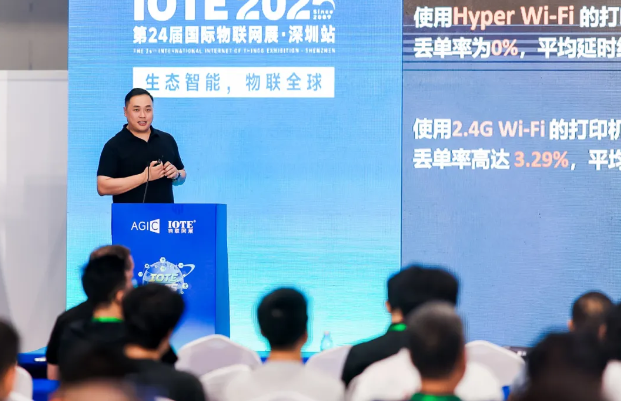
Shangmi Vice President of Product R&D, Zhou Tianwai, shared the progress of Wi-Fi HaLow (802.11ah) applications in commercial scenarios. He believes that Wi-Fi HaLow, with its sub-1GHz frequency band, offers advantages such as long range, strong penetration, low power consumption, and high-density connectivity, making it particularly suitable for IoT deployments in complex environments. Shangmi's Hyper Wi-Fi series products, including terminals and mini access points with built-in HaLow modules, have been deployed in multiple ultra-large and highly shielded enclosed spaces.
Zhou Tianwai noted that Wi-Fi HaLow natively supports the TCP/IP protocol, enabling connectivity to over 8,000 devices without a gateway, and has already achieved large-scale management in industrial scenarios such as livestock farming. With its mature commercial verification and open ecosystem, it is rapidly replacing approximately 50% of the LoRa market and 40% of the NB-IoT market, driving connectivity upgrades for over 1 billion devices worldwide and reshaping the commercial IoT landscape.

Tadao Kobayashi, Chairman of the 802.11ah Promotion Committee, shared the progress of Wi-Fi HaLow (802.11ah) implementation in the global IoT landscape. He explained that Japan and China have successfully applied Wi-Fi HaLow in areas such as agricultural monitoring, logistics management, and smart terminals, effectively addressing the connectivity challenges of traditional Wi-Fi in highly shielded environments and wide-area coverage. Leveraging the sub-1GHz frequency band, this technology enables long-range, strong penetration, and low-power communications, supporting stable access for large-scale devices and making it widely applicable in scenarios such as smart agriculture and industrial automation.
Tadao Kobayashi stated that Japan has expanded the HaLow frequency band to 850MHz, increasing transmission power and bandwidth, significantly enhancing performance, and promoting its application in railways, tunnels, and public infrastructure. He further envisioned that the integration of HaLow chips into smartphones will trigger a "second revolution," enabling users to directly connect to drones, medical equipment, and other devices without a network connection, enabling localized control and monitoring.
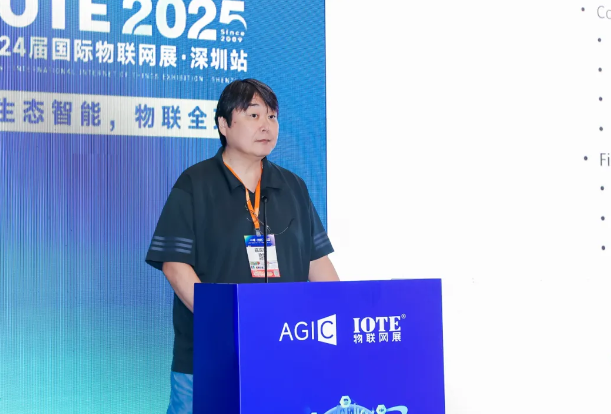
Dr. Masashi Takemoto, President of BeatCraft Co., Ltd. in Japan, shared his company's successful smart agriculture projects. In particular, he used Wi-Fi HaLow to enable real-time transmission and analysis of environmental data in a cabbage cultivation experiment, optimizing planting techniques and harvesting cycles. Thanks to the technology's long-range, low-power, and strong penetration characteristics, it maintains stable communication even in vast fields or complex structures, addressing the coverage challenges of traditional wireless solutions.
Dr. Takemoto also demonstrated the "WAC," a small inspection robot equipped with Wi-Fi HaLow, which reliably transmits data during building and infrastructure inspections, improving efficiency and reducing risks. By combining a RasPi 4 with a proprietary BC-11ah module and solar power, the system achieves wire-free, sustainable long-distance monitoring. Wi-Fi HaLow not only provides strong support for precision agriculture but also demonstrates broad application potential in areas such as industrial automation and smart cities. Thanks to its openness and ease of integration, it is becoming a key connectivity solution driving the intelligent transformation of multiple industries.
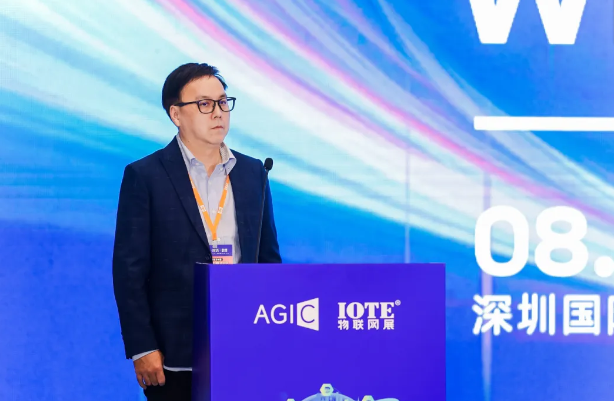
Qiu Dayi, Product Marketing Manager at AzureWave (Haihua Technology), introduced the company's development and achievements in the Wi-Fi HaLow field. He believes that this technology, leveraging the sub-1GHz frequency band, offers significant advantages in long distance, strong penetration, and low power consumption, making it particularly suitable for complex scenarios such as smart agriculture, industrial sensing, and outdoor security. AzureWave has launched several proprietary Wi-Fi HaLow modules, including the AW-HM610 and AW-HM581. These modules support interfaces such as SDIO and SPI, offer wide temperature stability, and carry global certifications such as FCC and CE, enabling flexible adaptation to a wide range of IoT devices.
Qiu Dayi also shared practical applications of Wi-Fi HaLow modules in products such as solar monitoring, IP cameras, and smart doorbells, achieving stable long-distance backhaul and low-power operation. He also mentioned that Wi-Fi HaLow is rapidly being integrated into smart agriculture, logistics tracking, and other fields, supporting high-density device access and edge computing, and driving the intelligent upgrade of industries.
The successful holding of this forum not only established a high-level exchange platform for Wi-Fi technology innovation and application, but also effectively promoted collaboration and consensus among all parties in the industry chain. Looking ahead, all participants will continue to work together to promote the evolution of Wi-Fi standards and the prosperity of the ecosystem, empowering new global connectivity experiences and jointly opening a new chapter in the wireless digital world.
This paper is from Ulink Media, Shenzhen, China, the organizer of IOTE EXPO (IoT Expo in China)













